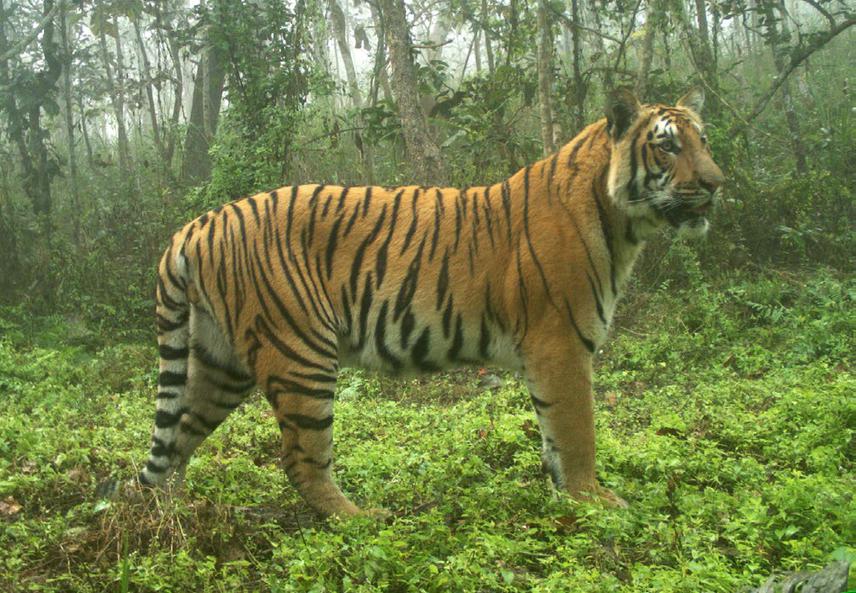Babu Ram Lamichhane
Other projects
1 Nov 2016
Study of Big Cat's Diet and Livestock Depredation Pattern in Chitwan National Park Nepal to Reduce Human Carivore Conflict
With increasing tiger populations in Nepal, especially in the Protected Areas, tigers are dispersing in forests outside. Such tigers may compete with the leopards already in existing in those forests and probably displace them. In this context, this project aims to understand the diet of both tigers and leopards through microscopic hair analysis in the biological corridor and non-protected forests. In addition, I will also ass the status of wild prey will to know the prey availability. Results will help the managers to devise better conservation measures for carnivores and reduce the conflict with communities. This project will be implemented in the Chitwan valley, north of Chitwan National Park, a biodiversity hotspot.

Tiger.
Tiger population is gradually increasing in Nepal, especially in protected areas. Core Protected Areas (PA) are almost occupied by the Tigers but there is unoccupied habitat in the buffer zone and outside. The recent (2018) national tiger survey in Nepal shows tigers dispersing outside PAs. In the forests outside PAs, prey density is very low, which is a challenge for survival of dispersing tigers. Free grazing is commonly practiced in these forests. There is a threat of livestock killing by tigers/leopards and their retaliation by people. With the increasing tiger density in PAs, young tigers, leopards and the other co-predator may be pushed out in marginal habitats. Thus, conservation initiation outside PAs is necessary to sustain the tiger population growth. Understanding the diet and status of prey-base is important for carnivore conservation. Thus, we will study tiger and leopard diet and assess prey status in forests outside the park in Chitwan Valley.
This project will be carried out in Barandabhar corridor and Nawalparasi forests in northern part of Chitwan valley. This project will help to understand how tigers and leopard are sustaining in these forests and how to secure their future. Tiger and leopard scats will be collected from the field. Two samples of each scat will be collected i.e. one for DNA based predator identification and other for diet analysis. Prey composition and proportion of wild prey and livestock biomass consumed by tigers and leopards will be analyzed. Predator (tiger or leopard) will be identified through DNA. In addition, Preybase will be assessed using distance sampling based line transect survey. We will also consult with the community members about the presence of predators and livestock depredation in their area if any.
Diet analysis will reveal whether tigers and leopards in these forests depend primarily on wild prey or domestic livestock. By knowing the wild prey status (or prey availability for carnivores) and carnivore diets, the managers can devise better conservation measures and reduce the conflict. Two sharing workshops will be conducted, one in Chitwan and other in Nawalparasi Divisional Forest Office areas, presenting the finding of project.